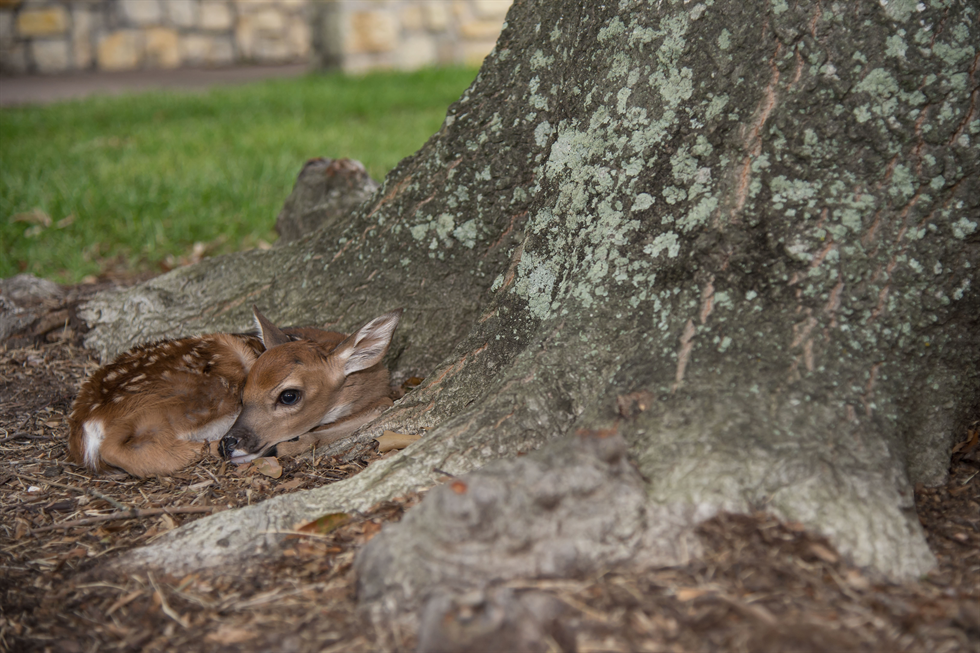Summer brings a baby boom worth fawning over
2016-06-06
The coming of summer brings fawning season to Johnson Space Center. The resident white-tail deer population reproduces only once a year—breeding in the fall and fawning the following summer.
The life of a young deer can be a tough one. Born barely able to walk, these young deer cannot keep up with their mothers, and they must spend their first weeks of life mostly alone. Fawns will hide from predators throughout the day as the does forage for food to sustain themselves and their babies. The mothers will periodically visit the fawns to nurse, but they also try to keep their young hidden from hunting coyotes and bobcats. Studies of JSC’s deer population show that increased rainfall in the winter and spring results in higher numbers of fawn the following year. In wet years, higher rates of twins, and higher survival rates due to better nutrition, give the deer population the boost it needs to recover from dry years.
Enjoy spotting the fawns as you travel around JSC throughout the summer season, but remember to keep your distance as you do with other wild animals on-site.
Another “breed” of commuters took over on May 19 for the first JSC employee Bike to Work Day. Read about this sustainability success story and upcoming events in the June Sustainability Opportunities.

A fawn nestles against the trunk of a tree. Image Credit: Lauren Harnett/NASA
The life of a young deer can be a tough one. Born barely able to walk, these young deer cannot keep up with their mothers, and they must spend their first weeks of life mostly alone. Fawns will hide from predators throughout the day as the does forage for food to sustain themselves and their babies. The mothers will periodically visit the fawns to nurse, but they also try to keep their young hidden from hunting coyotes and bobcats. Studies of JSC’s deer population show that increased rainfall in the winter and spring results in higher numbers of fawn the following year. In wet years, higher rates of twins, and higher survival rates due to better nutrition, give the deer population the boost it needs to recover from dry years.
Enjoy spotting the fawns as you travel around JSC throughout the summer season, but remember to keep your distance as you do with other wild animals on-site.
Another “breed” of commuters took over on May 19 for the first JSC employee Bike to Work Day. Read about this sustainability success story and upcoming events in the June Sustainability Opportunities.

A fawn nestles against the trunk of a tree. Image Credit: Lauren Harnett/NASA







